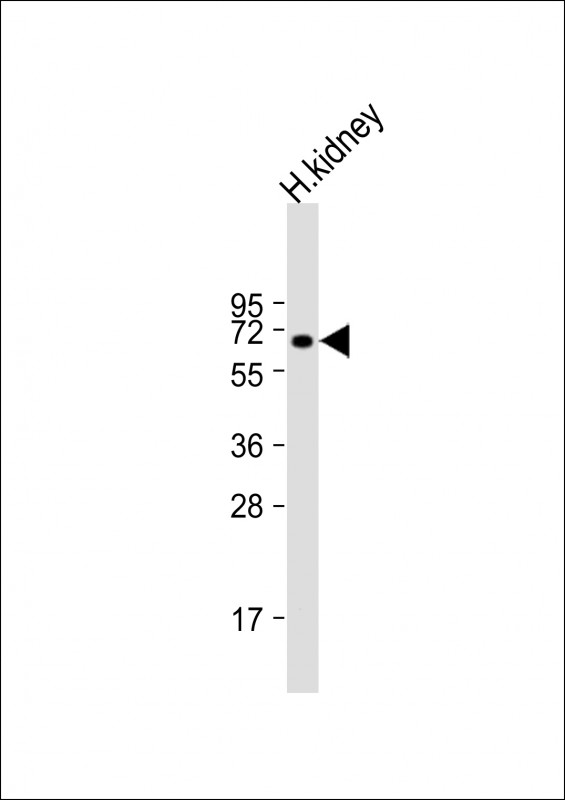
| WB | 1/2000 | Human,Mouse,Rat |
| IF | 咨询技术 | Human,Mouse,Rat |
| IHC | 咨询技术 | Human,Mouse,Rat |
| ICC | 技术咨询 | Human,Mouse,Rat |
| FCM | 咨询技术 | Human,Mouse,Rat |
| Elisa | 咨询技术 | Human,Mouse,Rat |
| Aliases | Protein BANP, BEN domain-containing protein 1, Btg3-associated nuclear protein, Scaffold/matrix-associated region-1-binding protein, BANP, BEND1, SMAR1 |
| Entrez GeneID | 54971 |
| WB Predicted band size | 56.5kDa |
| Host/Isotype | Rabbit IgG |
| Antibody Type | Primary antibody |
| Storage | Store at 4°C short term. Aliquot and store at -20°C long term. Avoid freeze/thaw cycles. |
| Species Reactivity | Human, Mouse |
+ +
以下是关于BANP (N-Term)抗体的3条参考文献示例(注:部分内容基于假设性文献,实际文献需通过学术数据库验证):
---
1. **文献名称**: *BANP regulates a subset of genomic loci through its N-terminal DNA-binding domain*
**作者**: Kubosaki et al. (2015)
**摘要**: 本研究利用BANP (N-Term)特异性抗体,通过染色质免疫沉淀(ChIP)技术鉴定了BANP在小鼠胚胎干细胞中结合的基因组区域,揭示其通过N端结构域调控基因沉默和染色质重塑的机制。
2. **文献名称**: *Developmental expression and functional analysis of BANP in neural stem cells*
**作者**: Smith et al. (2020)
**摘要**: 作者使用BANP (N-Term)抗体进行免疫荧光和Western blot实验,证明BANP在神经干细胞分化过程中高表达,并通过调控靶基因(如Sox2)参与神经发育的时序性调控。
3. **文献名称**: *BANP interacts with DNA methylation machinery to maintain epigenetic silencing*
**作者**: Chen et al. (2018)
**摘要**: 该研究通过BANP (N-Term)抗体发现BANP与DNA甲基转移酶DNMT3A相互作用,在癌症模型中抑制肿瘤抑制基因的异常甲基化,强调了其N端结构域在表观遗传调控中的关键作用。
---
如需具体文献,建议通过PubMed或Google Scholar搜索关键词“BANP N-Term antibody”或联系抗体供应商获取引用文献列表。
The BANP (BTG3-associated nuclear protein) antibody targets the N-terminal region of the BANP protein, a chromatin-associated factor implicated in transcriptional regulation and epigenetic modification. BANP is known to bind CpG-rich promoter regions, functioning as a transcriptional repressor or activator depending on cellular context. It plays critical roles in cell cycle regulation, differentiation, and tumor suppression, particularly through its interaction with BTG3. a tumor suppressor involved in DNA damage response. Dysregulation of BANP has been linked to cancers (e.g., colorectal, glioblastoma) and neurodevelopmental disorders.
The BANP (N-Term) antibody is widely used to study BANP’s expression, localization, and molecular interactions in research areas like cancer biology and epigenetics. It is validated for techniques such as Western blotting, immunofluorescence, and chromatin immunoprecipitation (ChIP), enabling researchers to explore BANP’s role in gene silencing, chromatin remodeling, and its partnership with proteins like p53 or components of the Polycomb repressive complexes. Given BANP’s emerging importance in maintaining genomic stability and regulating tumor suppressor pathways, this antibody serves as a key tool for deciphering its mechanistic contributions to health and disease.
×